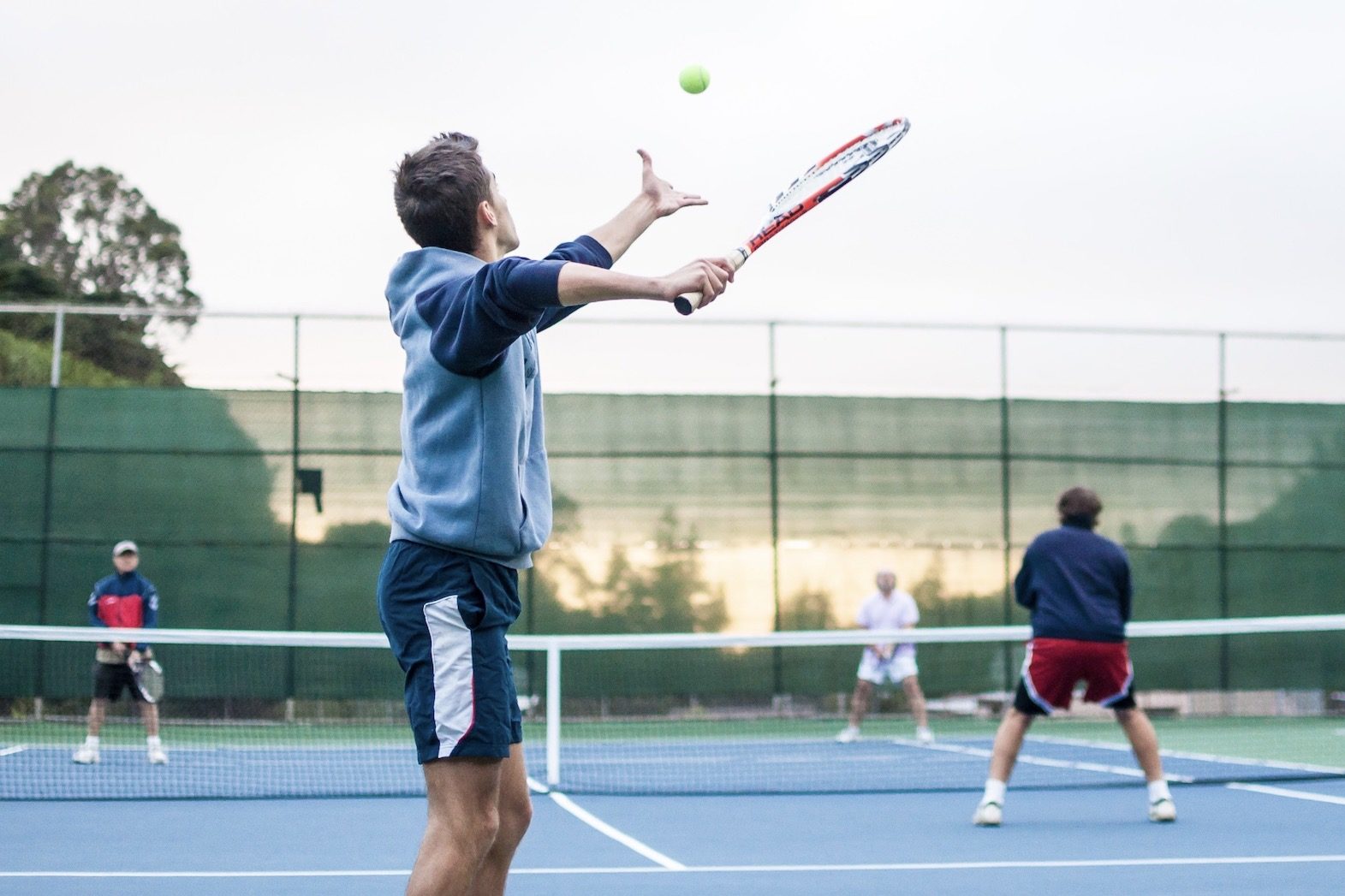
 Spring is finally here, and so is the outdoor tennis season… and tennis injuries. While many recreational and youth tennis players are eager to start practicing their backhand, a successful season starts before setting foot on the court.
Spring is finally here, and so is the outdoor tennis season… and tennis injuries. While many recreational and youth tennis players are eager to start practicing their backhand, a successful season starts before setting foot on the court.
Tennis is a physically taxing sport, and overuse injuries are common among players. While it can be tempting to push through the pain of an injury and continue playing, both injured and non-injured players alike can greatly benefit from physical therapy.
Physical therapists not only treat overuse injuries such as tennis elbow, rotator cuff tendinitis and muscle strains — they also help prevent them. PT’s can assess and correct upper and lower body weakness, core and trunk instability, and dysfunctional movement patterns so that players can be stronger and more efficient on the court.
“Tennis is a whole-body sport,” said Rebound physical therapist David Bergstrom (Bend West clinic). Bergstrom is a former University of North Dakota (N.C.A.A. Division I) tennis player and youth tennis coach. “When players aren’t foundationally strong, the rotation and stress from playing tennis can cause injury.”
While less common in the sport than the name implies, tennis elbow — or lateral epicondylitis — is a type of tendinitis (swelling of the tendons) that causes pain in the elbow and forearm. Typically an injury seen in novice players with poor stroke technique, the repetitive stress injury can be linked to a lack of rotator cuff (muscles and tendons surrounding the shoulder joint) and forearm strength, said Bergstrom.
When a player’s racket makes contact with the ball in the backhand position and “the shoulder isn’t able to brace for the impact due to weakness and instability, the force goes to the elbow,” he explained.
Shoulder bursitis (inflammation of the tissue that cushions the tendon) is another tennis overuse injury commonly caused by lack of shoulder stability and overuse of the rotator cuff muscles, noted Bergstrom. Tennis players are also prone to shoulder impingement (frictioning of the rotator cuff tendons on the shoulder blade, commonly associated with repetitive overhead activity) and rotator cuff tendinitis.
In general, physical therapy treatment for tennis elbow and shoulder injuries focuses on decreasing pain and inflammation and gaining joint mobility, then strengthening and stabilizing the affected muscles and tendons through targeted exercises, said Bergstrom.
When it comes to tennis injuries, “there are also plenty of hip, ankle and knee issues” that can also be addressed in physical therapy, said Bergstrom. He also encourages tennis players to seek out physical therapy before a painful injury appears. When it comes to technique and footwork, “many people lack efficiency and waste energy when playing tennis,” he said.
“Preventative PT for tennis players is geared toward gaining mobility (movement) in the spine, core stability to help with endurance, leg and hip rotational strength, agility, and landing and push-off mechanics and footwork,” said Bergstrom.
By staying healthy and treating injuries that arise, tennis players can enjoy the sport for years to come. “With tennis, there’s the ability to play throughout your whole life and be competitive,” noted Bergstrom. “It’s a sport that you can learn at the age of five and play until you’re 95.”
